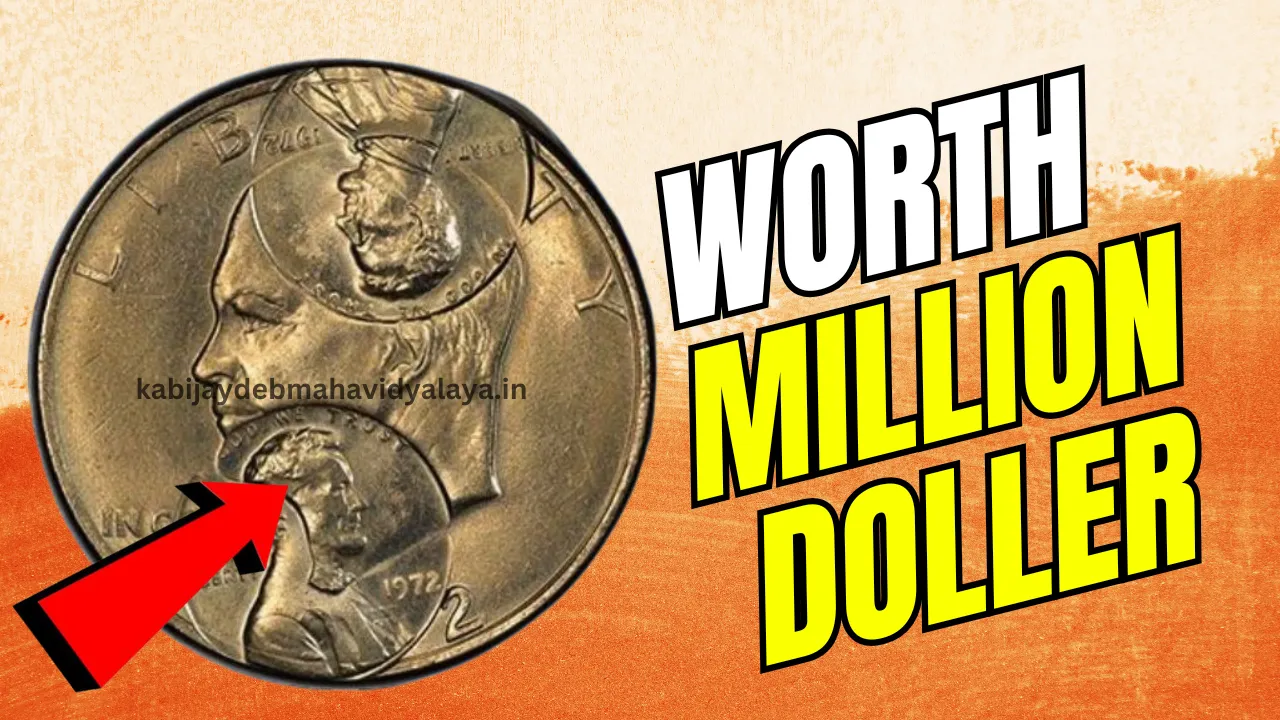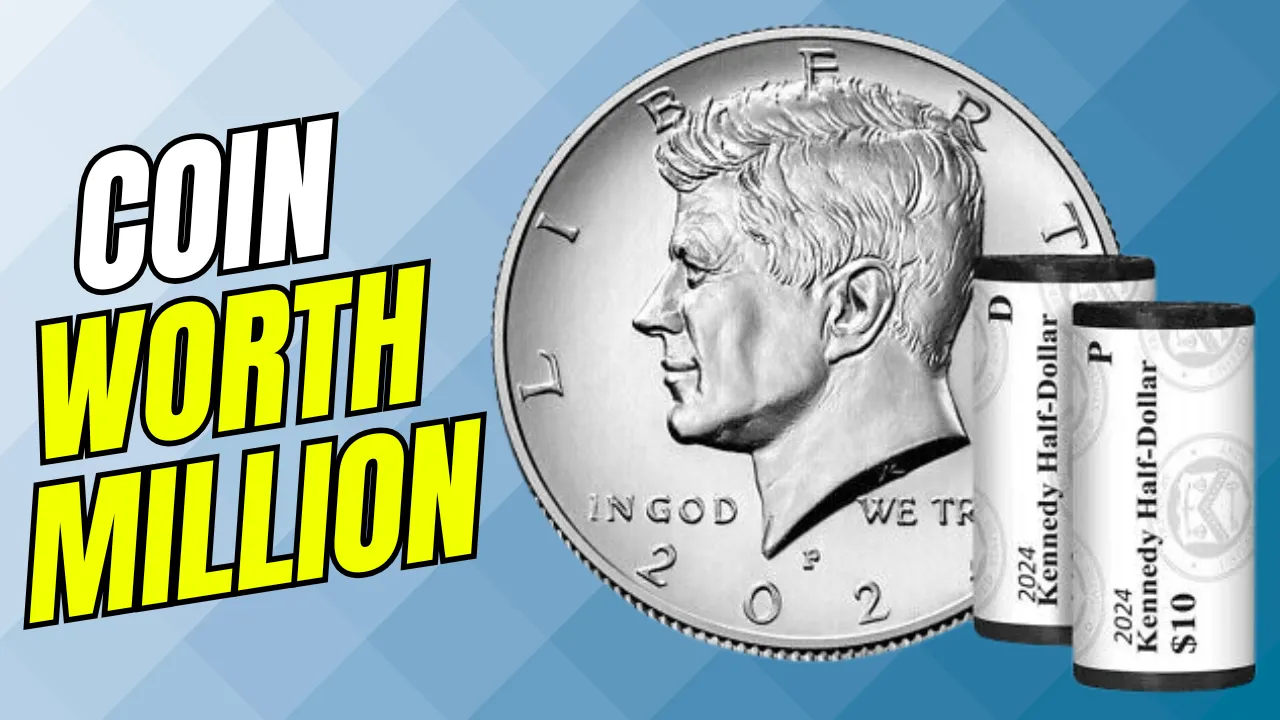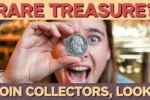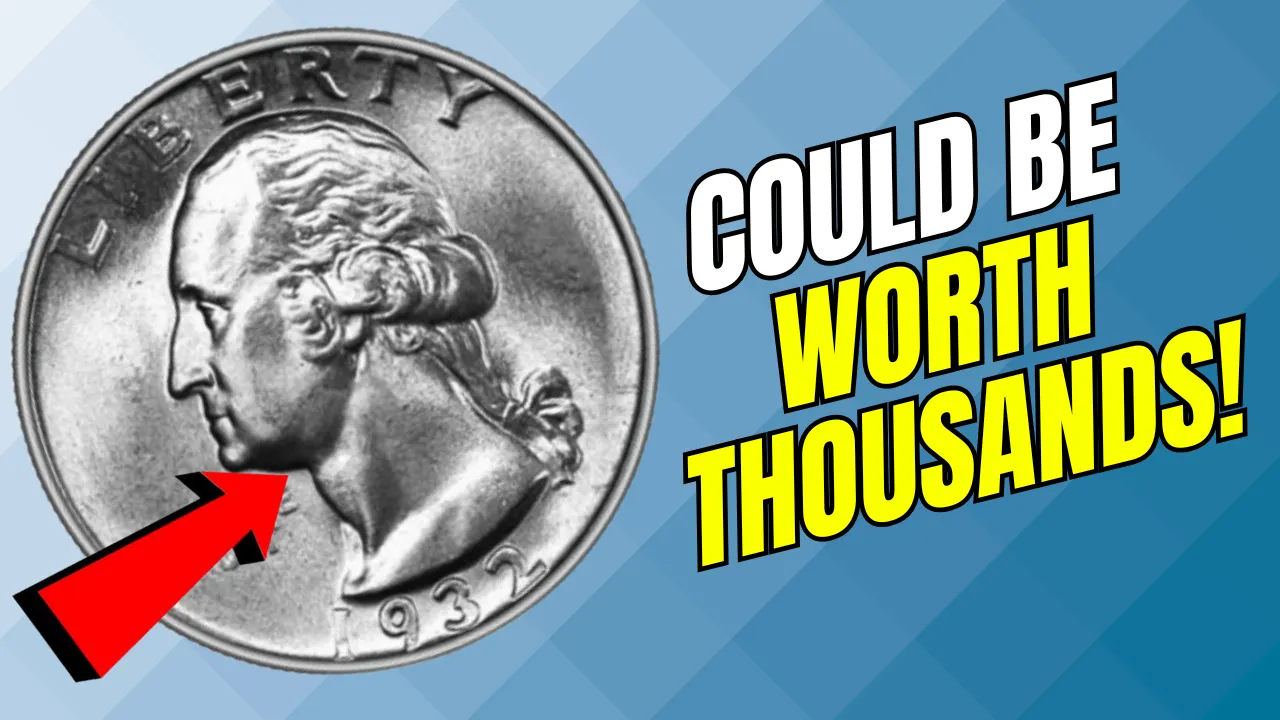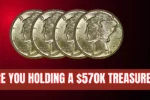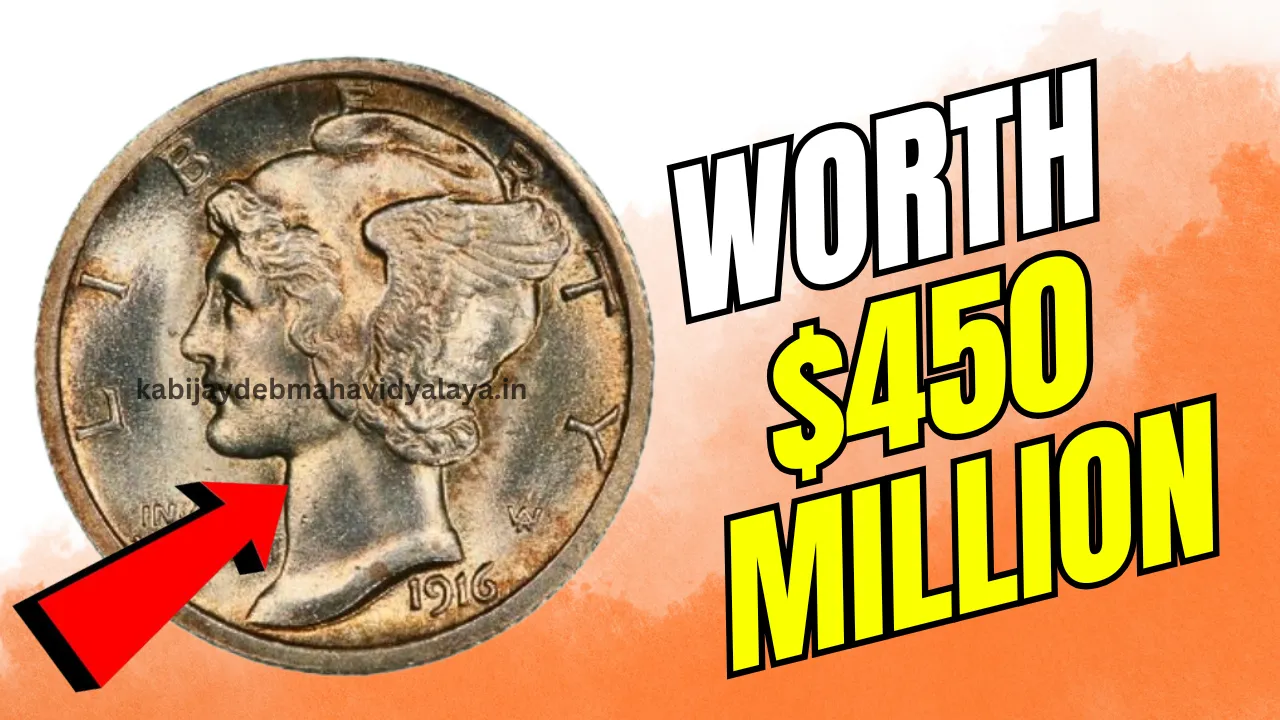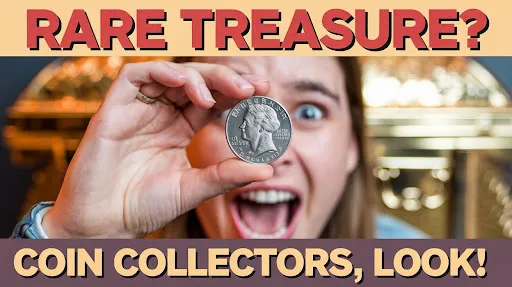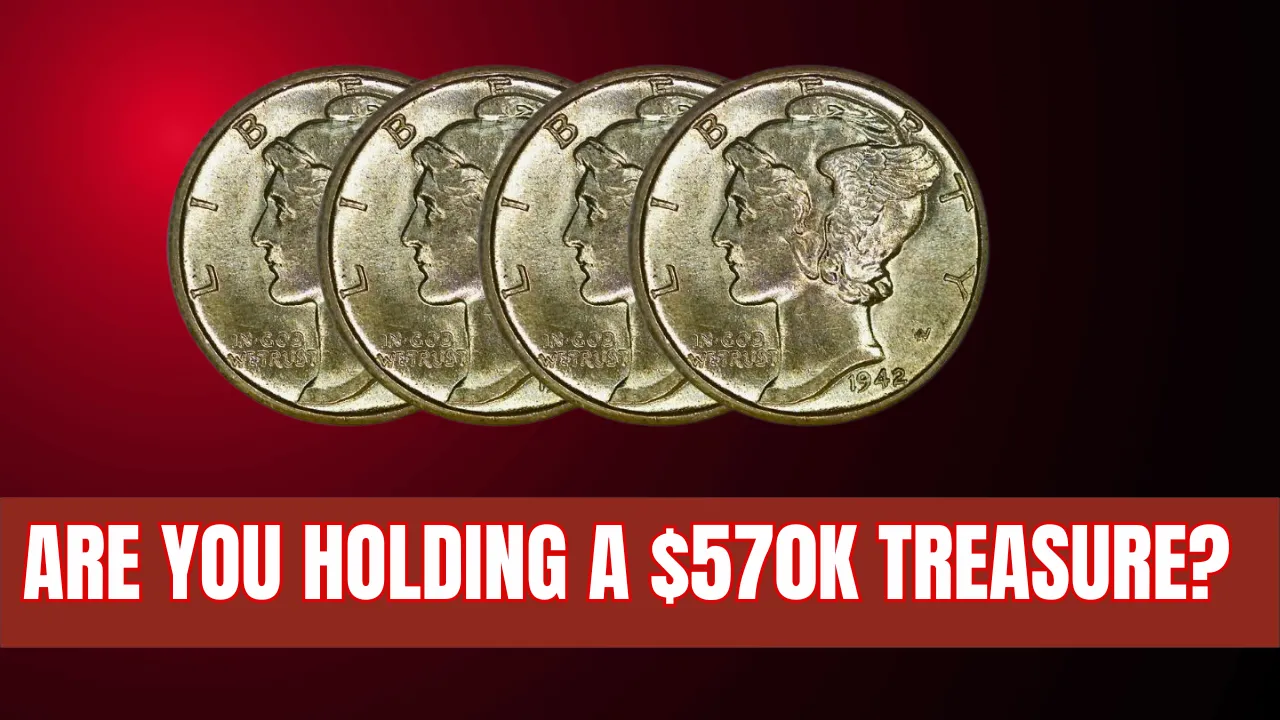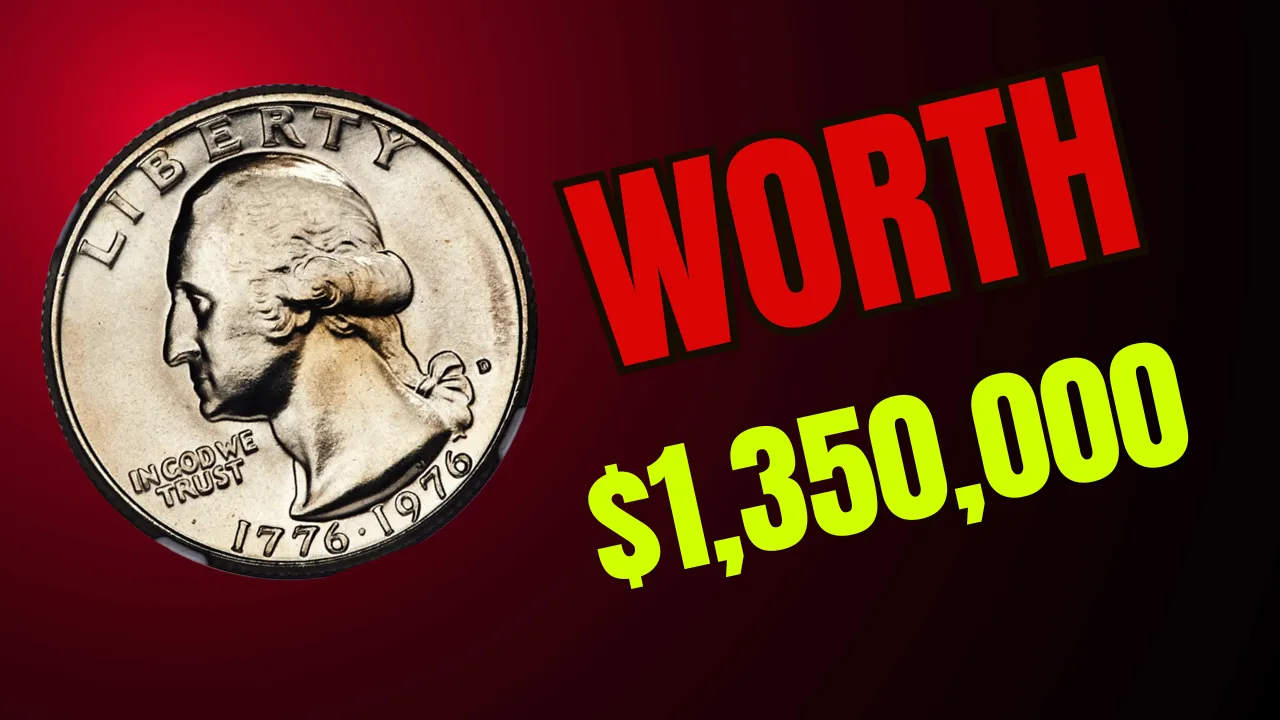Top 3 Rare Quarters You’ve Been Holding Onto Without Knowing: Have you ever considered the hidden value of the coins sitting in your pocket or jar? Among the millions of quarters minted annually, a select few stand out due to their rarity and unique features. These coins, often overlooked, can be worth far more than their face value, fetching hundreds or even thousands of dollars in the collectors’ market.
This guide will introduce you to three rare quarters that might already be in your possession. From historical significance to minting errors that make them one of a kind, these coins could transform your spare change into a prized collection piece. Let’s dive into the fascinating world of rare quarters!
Rare Quarters: An Overview
| Coin | Unique Feature | Estimated Value | How to Identify |
| 1932-D Washington Quarter | Extremely low mintage | $100 to $5,000+ | Look for a “D” mintmark on the reverse at the base of the eagle. |
| 1970-S Proof Quarter | Doubled die obverse error | $1,500 to $3,000 | Check inscriptions like “LIBERTY” for noticeable doubling. |
| 1999 Delaware Spitting Horse | Die crack creating a unique “spit” | $20 to $100+ | Inspect the reverse side for a raised line extending from the horse’s mouth. |
The 1932-D Washington Quarter: A Collector’s Dream
The 1932-D Washington Quarter is an exceptional coin with deep historical significance. Minted to commemorate George Washington’s 200th birthday, this coin marked the beginning of a new era in American currency design.
Why It’s Rare
Only 436,800 of these quarters were minted at the Denver Mint, making it one of the lowest-mintage quarters in U.S. history. The scarcity of this coin, coupled with its historical importance, has made it a top priority for coin collectors worldwide.
How to Identify It
Flip the coin and look at the base of the eagle on the reverse side. A small “D” mintmark indicates that it was minted in Denver. Even a well-worn 1932-D Washington Quarter can sell for $100 to $500, while coins in mint condition can fetch over $5,000 at auction.
1970-S Proof Quarter: An Eye-Catching Error
Proof coins are specially minted for collectors, and the 1970-S Proof Quarter stands out because of a minting error. Its doubled die obverse gives it a unique appearance and adds significant value.
The Story Behind the Error
This quarter’s doubled die obverse occurred when the die used to strike the coin was misaligned, resulting in a doubling effect on certain parts of the design. Such errors are rare, especially on proof coins, which are typically crafted with precision.
How to Spot It
Examine the inscriptions on the obverse side, particularly “LIBERTY” and “IN GOD WE TRUST.” If the letters appear to have been stamped twice or seem slightly misaligned, you’ve found a doubled die quarter. These coins are valued between $1,500 and $3,000 depending on the clarity of the doubling and the coin’s condition.
1999 Delaware Quarter: The Playful Spitting Horse
The 1999 Delaware Quarter, part of the 50 State Quarters series, is famous for its amusing error dubbed the “Spitting Horse.” This die crack on the reverse side gives the horse the appearance of “spitting,” a feature that has captivated collectors.
Why It Stands Out
This coin is a delightful example of how minting errors can make even modern quarters desirable. The die crack responsible for the spitting effect creates a raised line extending from the horse’s mouth, making it look as though it’s exhaling or spitting.
How to Identify It
Closely examine the horse on the reverse of the quarter. A magnifying glass can help you spot the line extending from its mouth. Circulated versions of this coin can sell for $20 to $75, while pristine examples can fetch $100 or more.
Tips for Identifying Rare Quarters
1. Pay Attention to Mintmarks
- Look for mintmarks like “D” (Denver), “S” (San Francisco), or “P” (Philadelphia). Coins from mints with lower production runs are often rarer and more valuable.
2. Use a Magnifying Glass
- A good magnifying glass or jeweler’s loupe can help reveal important details like die cracks, doubling, or other minting errors that can increase a coin’s value.
3. Preserve the Condition of Your Coins
- The condition of a coin plays a significant role in determining its value. Avoid cleaning coins, as this can damage their surfaces and reduce their worth. Instead, store them in protective cases to maintain their quality.
Why You Should Examine Your Change
Most people rarely give their pocket change more than a cursory glance, yet it could hold valuable treasures. Rare quarters like the 1932-D Washington Quarter, 1970-S Proof Quarter, and 1999 Delaware Spitting Horse show how everyday items can hide extraordinary value.
The next time you come across a quarter, take a closer look. You might find a piece of history or a rare minting error that could transform your spare change into a small fortune.
FAQs
What are the most valuable quarters to look for?
Look for quarters with low mintages, historical significance, or minting errors, such as the 1932-D Washington Quarter or the 1999 Delaware Spitting Horse.
How can I identify a rare quarter?
Inspect the coin for mintmarks, unusual details, or errors like die cracks or doubling. A magnifying glass can be helpful.
Are error coins always worth more?
Not all error coins are valuable, but significant or well-known errors like the Spitting Horse can add considerable value to a coin.
Final Thoughts
Don’t overlook the potential treasures in your loose change! From the historic 1932-D Washington Quarter to the quirky 1999 Delaware Spitting Horse, these rare quarters could be waiting for you to discover them. Start examining your coins today, and who knows? You might uncover a valuable piece of history.
Feel free to share this article with fellow coin enthusiasts or comment below with your rare coin finds. If you’re eager to learn more, check out our other guides to collectible coins and hidden treasures.
